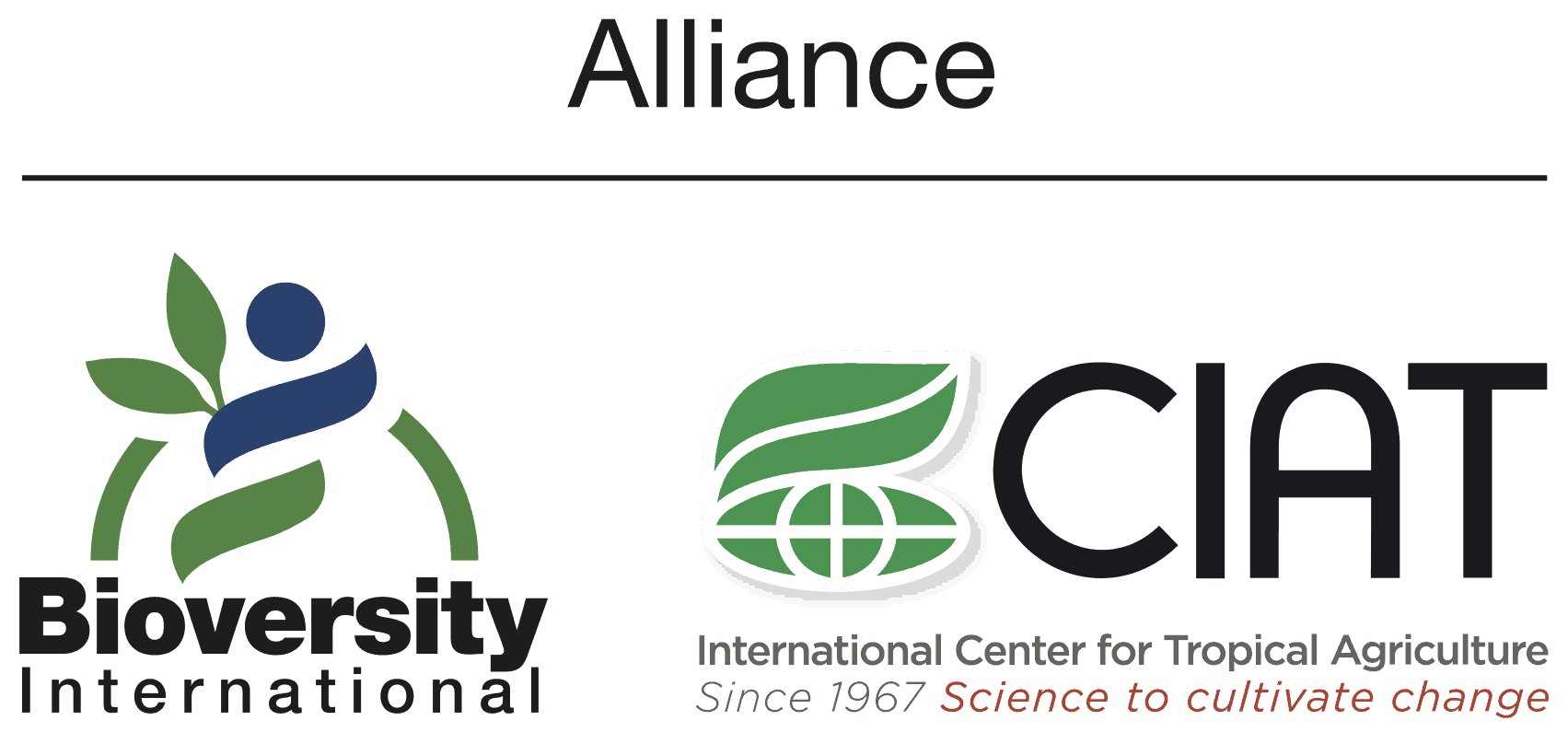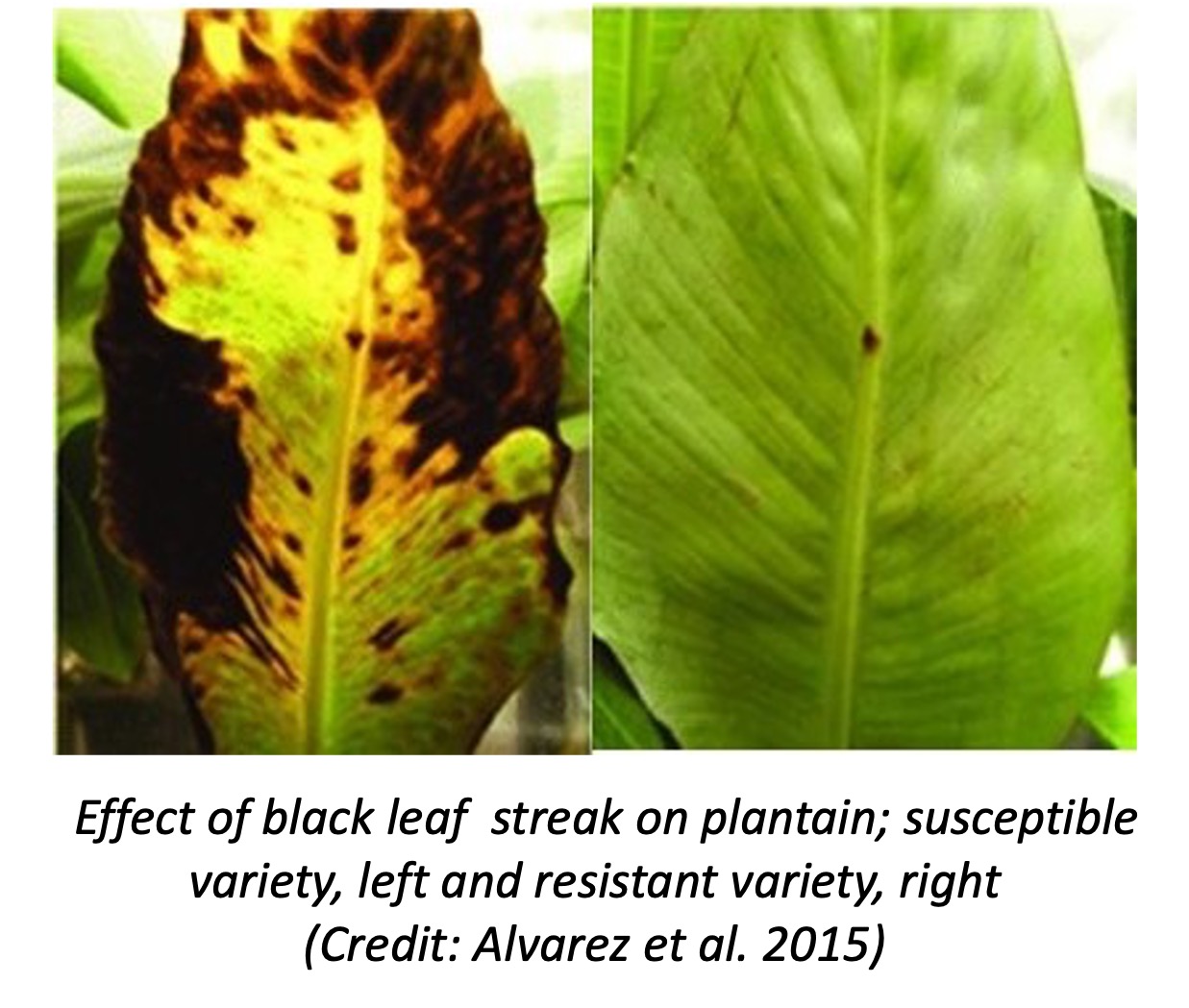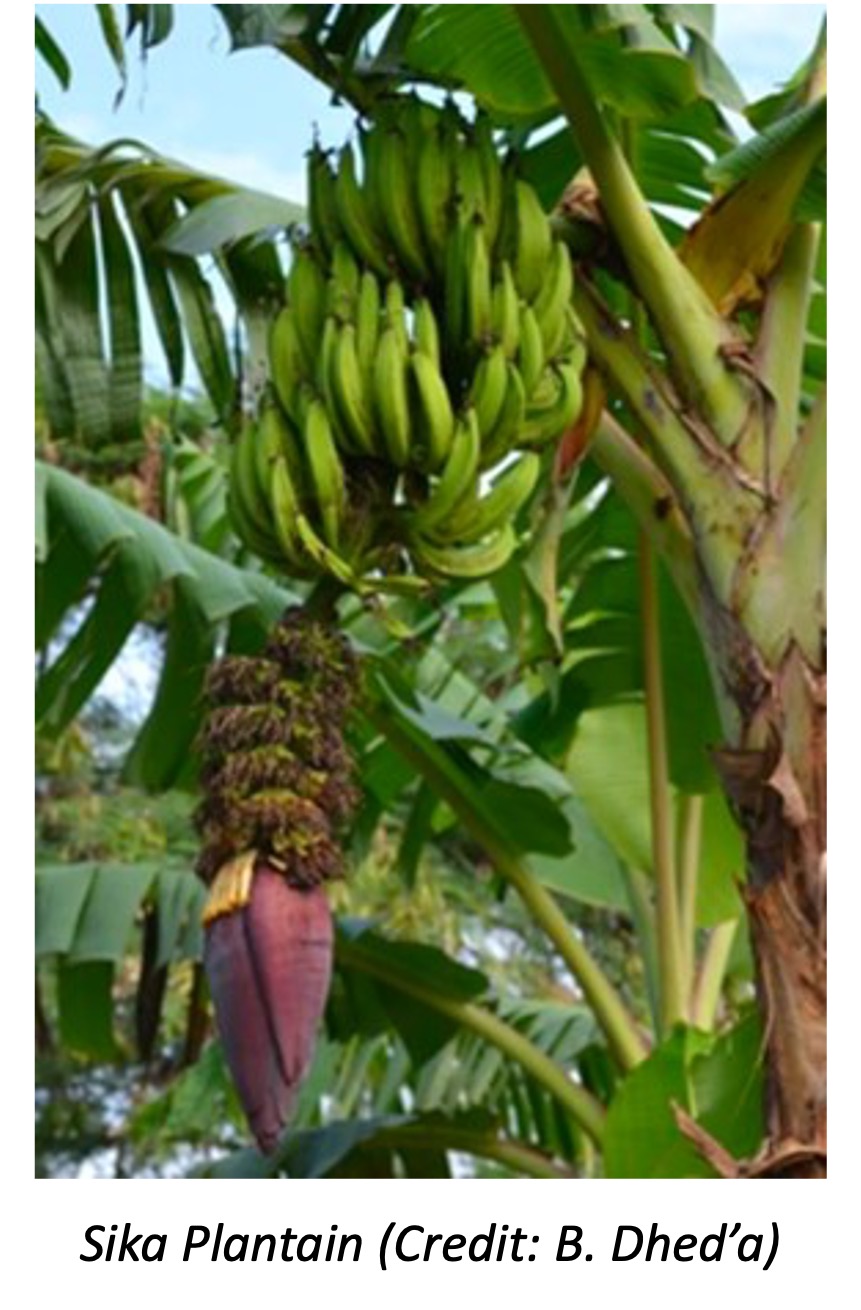Improved Varieties of Plantain for Tropical Lowlands
Summary
Plantain is the third most important food crop after yam and cassava in much of Central and West Africa. The major producing countries are Cameroon (4.5 million t), Ghana (4 million t), Nigeria (3.2 million t), and Ivory Coast (1.6 million t). Black leaf streak disease is the greatest production constraint with yield losses ranging from 33% to 50% or more. Weevils and nematodes undermine yields by destroying the corm and root system. Population growth reduces fallow intervals and soil fertility. The devastating effects of diseases and pests on plantain production spurred development of resistant hybrids. Improvement of plantains also focused on high productivity, drought resilience and preferred cooking traits. Varieties of improved plantain now exist that are adapted to diverse climatic and production conditions.
About the Solution
Breeding for host plant resistance to diseases and pests is the most appropriate control strategy since chemical control is expensive and environmentally hazardous. Most of varieties of the hybrid line “PITA” were produced by crossing a female with increased fertility (AAA group) and the wild banana (Calcutta 4). On-farm research in Cameroon, Ivory Coast and Nigeria shows that mixing disease resistant plantain hybrids with local cultivars reduces black leaf streak pressure on the susceptible local cultivars, raising the number of functional leaves at flowering and increasing fruit yield. This strategy preserves genetic diversity while providing farmers access to high-yielding resistant hybrids. It must be noted that while plantain hybrids offer prospective for enhancing yield and resistance, they do not have the same cooking properties of preferred landraces and therefore can only be used for specific preparations.
Specific varieties of the high-yielding and black leaf streak resistant hybrid PITA line have been selected for different countries. PITA 4, PITA 14, PITA 17, and PITA 18 perform best growing areas in Nigeria, while PITA 23 and 27 are suitable for Cameroon. Another plantain hybrid, called PITA 3, is popular among growers in Ivory Coast and has also been adopted in Mali and Burkina Faso. The variety FHIA 21, bred from a Honduran high-yielding and black leaf streak resistant line, is massively propagated, and distributed to farmers in Benin, Burkina Faso, Ivory Coast and Togo by the West Africa Agricultural Productivity (WAAAP) program. The PITA hybrids have moderate resistance to nematodes so must be cultivated on plot with low infestation.
Traditional varieties of plantain in West Africa include Big Ebanga, Orishele, Afoto and Agnirin which are resistant to nematodes but susceptible to black leaf streak. Farmer preferences are also guided by height, with shorter statured (<3m) varieties requiring no staking, being less vulnerable wind and allowing easier harvest. Taller statured plantains (4-5m), on the other hand, prevent theft of bunches which can account for substantial preharvest losses. All varieties can be boiled, mashed, or fried for use in local dishes.
Plantains are typically grown in smaller gardens with application of manure and household refuse that ensures continuous high productivity for many years. They are also produced in fields under shifting cultivation and bush fallow with low or no input of organic fertilizer causing bunch yields to decline rapidly after the first production cycle due to disease pressure and poor management practices. The major harvest in West-Africa occurs in the dry season spanning the months of December through March, when most other starchy staples are in short supply, but bunches of fruit are produced throughout the year.
Commercialization
Commercially available
Solution Images
Institutions




